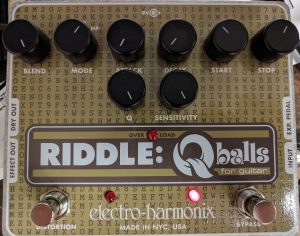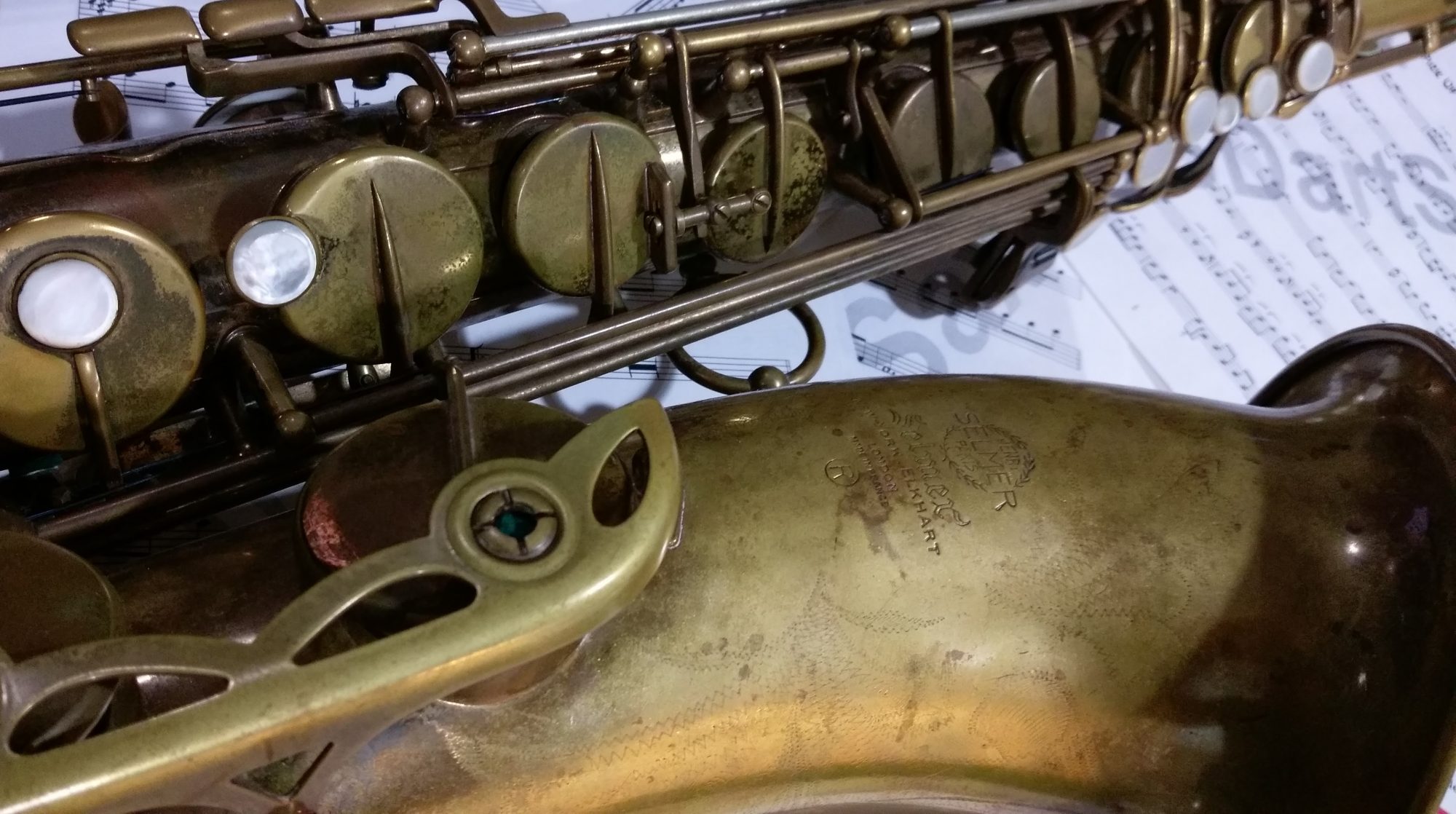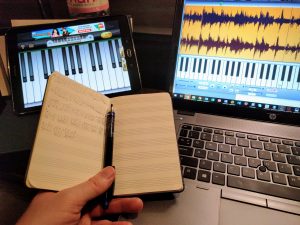I got a new thing! I’ve got a few transcriptions that I’m working on that have a specific effect applied, and it seemed like a fun excuse to dive in to the world of electrified sax effects.
So I picked up an Electro-harmonix (‘EHX’) Riddle: Q-Balls pedal. Although it’s squarely marketed at guitar players, it’s pretty versatile, and is pretty effective for saxophone as well.
What does it do? I’m glad you asked! It’s an envelope filter. It takes the input (your sound) and modifies it in different ways depending on what settings you choose. It’s kind of like a ‘wah’ pedal, but instead of moving a pedal, it modifies each note automatically.
EHX makes a similar pedal, the Q-Tron, which is a bit cheaper. However, after some research, I decided to go with the Q-balls pedal because it has more configuration options. This makes it more flexible, but also more complex to learn. I have a feeling I’m going to stick to just a few settings on the pedal, so it may be that the additional flexibility is lost on me, or maybe I wouldn’t be able to get the sound I need out of the Q-tron. I have no plans on getting one, so I don’t plan on doing a comparison any time soon.
 So let’s dive in to some of the settings and what they do. The picture is the settings that I landed on after about an hour of experimentation.
So let’s dive in to some of the settings and what they do. The picture is the settings that I landed on after about an hour of experimentation.
From left to right:
- Blend: This is the mix of the wet/dry signal. I went with 100% wet. I’m replicating a pretty specific effect which isn’t subtle, so I went all the way.
- Mode: There are three ‘pass’ filters – low, medium, and high. This drives what frequency range the pedal operates on. Even with Tenor Sax, I found I had to use the HP mode or the effect was negligible. I suspect Alto would be the same. Maybe Bari would warrant the medium pass, I’ll have to experiment.
- Attack/Decay: The next two knobs determine how dynamic the effect is with respect to note changes, attacks, and releases. I went with the most sensitive settings.
- Start/Stop: This is where the most experimentation happened. Since this is a filter sweep, the start and stop knobs determine the frequency range (pitch) that the effect starts and stops on. So you need to match the starting range to the range that you’re predominantly playing in (where you want the effect to be the most dramatic). Stop gives you different sounds if you set it above vs. below the start knob. The distance between the two determines how wild the effect will be.
- Q/Sensitivity: I didn’t play around with these much. I just went with the ‘all-in’ settings since anything less seemed ineffective.
- Bypass switch: Turns the effect on and off
- Distortion: Boosts the signal like crazy!
I’ll continue to play with the pedals and the settings, I’m sure I’ll learn much more about how to get exactly the sound I’m looking for. I’ll post a video shortly.
A quick word about saxophone effects – there is a steep learning curve! Adding even a single effect to your sound complicates your life greatly. You have to first figure out how to get a line-level signal from your mic to the pedal. Then you need to be able to monitor the pedal output, as well as amplify it for the audience somehow.
The thing to remember is that these effects are not for you, they are for the audience. You will never hear what they hear. When you’re playing, the acoustic sound of the horn resonates through your head in a very powerful way, so no matter how hot your in-ear monitors are, you’re never hearing the 100% wet signal, it’s always mixed in with the acoustic sound of your horn. So it’s important to record and listen back until you get things really dialed in.
Similarly, when it comes to live playing, these aren’t going to be very useful in intimate settings where there is little or no amplification. If your sax isn’t prominent in the house mix, the effect is lost.
All that said, effects can be a lot of fun to tinker with. Just don’t lose sight of the music. Make sure that you’re using these effects in a musical way to augment ideas that are interesting, not just as a gimmick.
Enjoy!
@SDartSax


 So let’s dive in to some of the settings and what they do. The picture is the settings that I landed on after about an hour of experimentation.
So let’s dive in to some of the settings and what they do. The picture is the settings that I landed on after about an hour of experimentation.